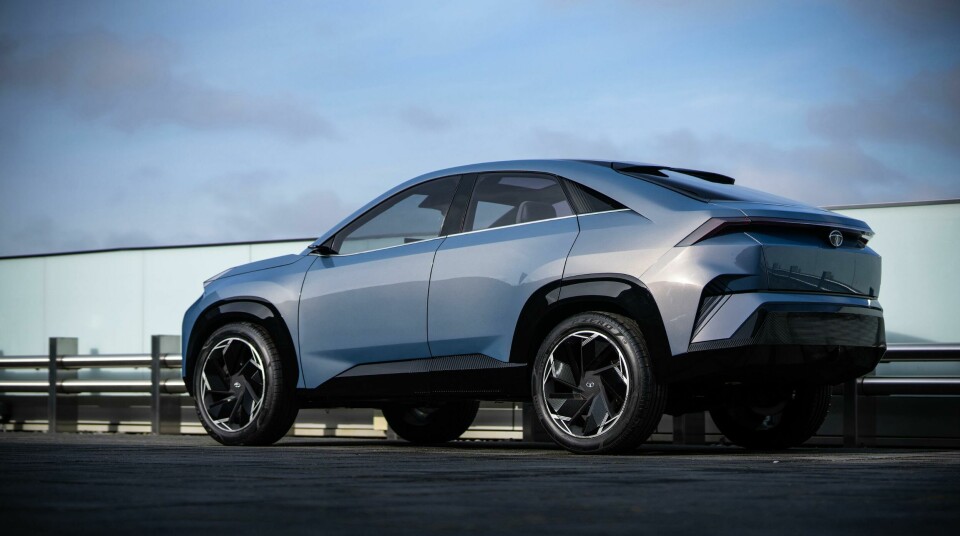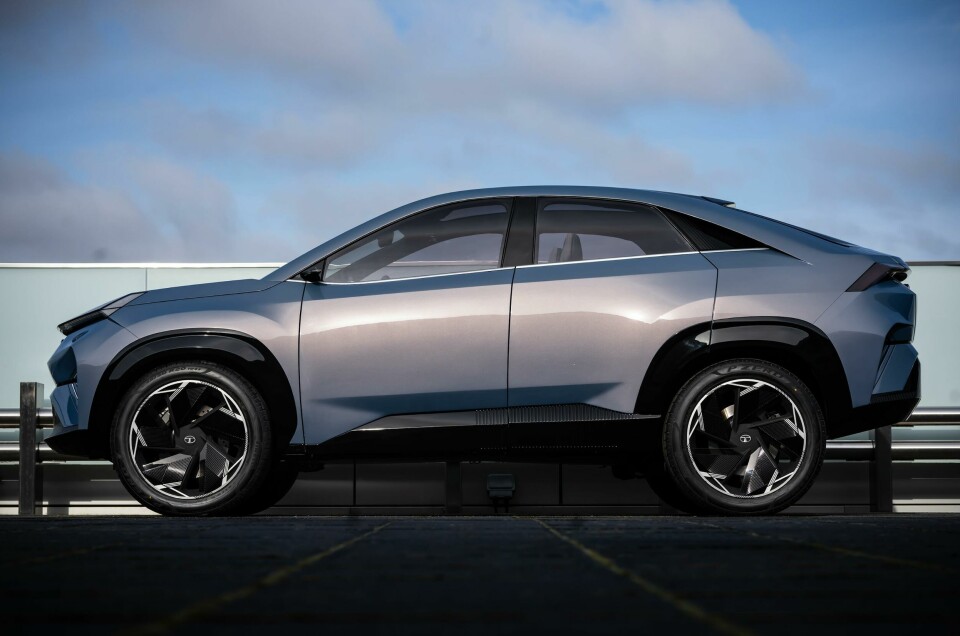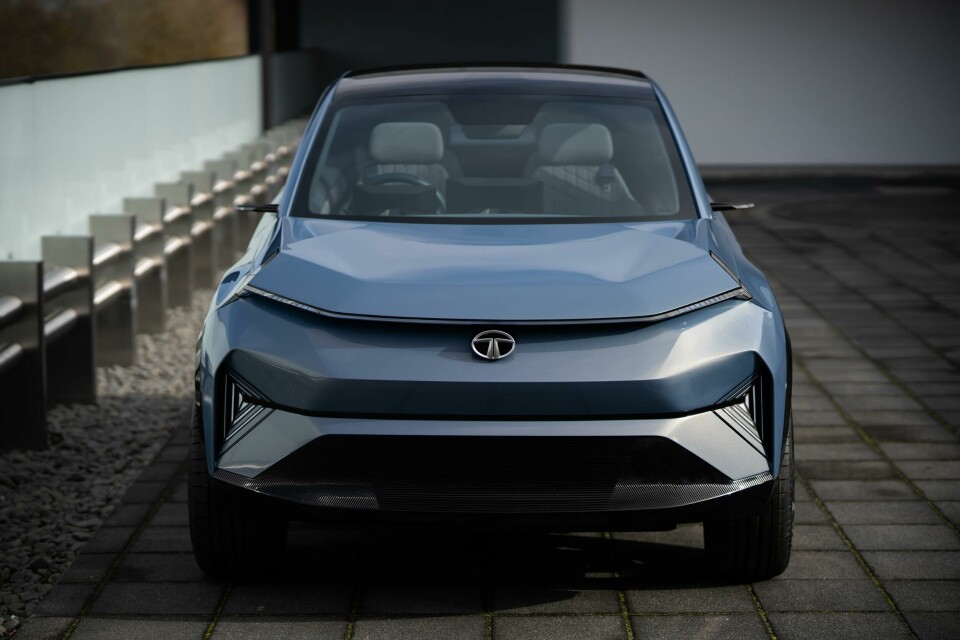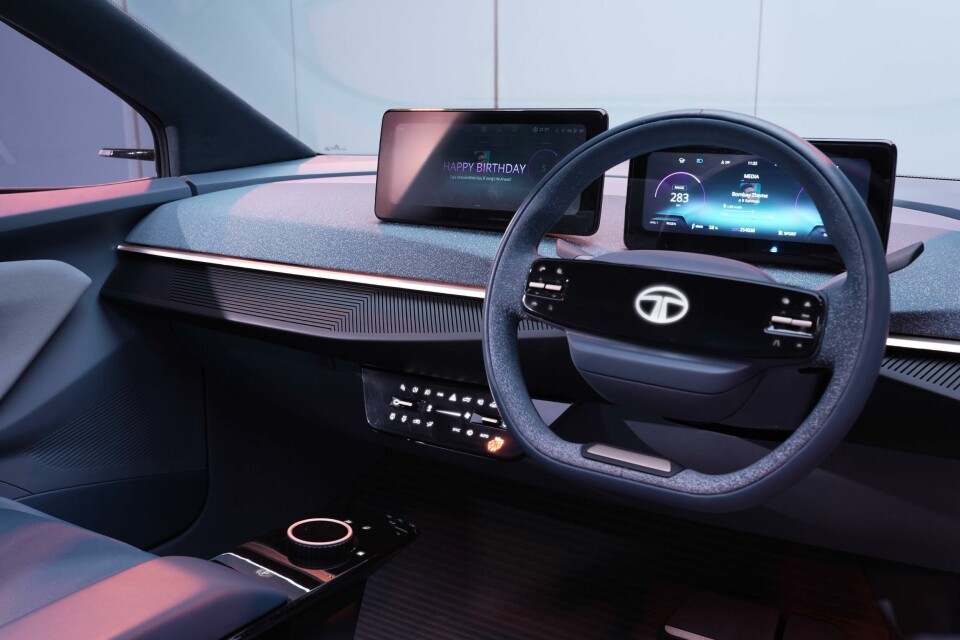
Tata throws a Curvv ball into the Indian market
Tata Motors is introducing the next stage of its Impact Design language with its Concept Curvv. Mark Smyth spoke with the design team that created it
Tata Motors is continuing to break into new segments in India, especially when it comes to electrified vehicles. Its electric range currently includes the Nexon and Tigor and now it has revealed its Concept Curvv, its first SUV with a coupe body style which the automaker says will go into production within the next two years.
Car Design News was given exclusive access to the design team ahead of the concept’s reveal and they say that the concept is 80-85% representative of the final production model, which fits into the compact SUV or crossover segment.
“It’s a car that is halfway between an elegant vehicle that you can drive in the city, doing a lot of different things in a refined, premium way, and an SUV with high ground clearance and a feeling of protection,” says Aurelien Doisy head of design Europe at Tata Motors.
“It’s a new body style for India, one which we are used to seeing in other parts of the world, so it’s really a big push into global standard type products,” says Doisy. It’s also a model that continues the leadership attributes of the brand in India when it comes to EV design and technology. However, while it might grab the attention as an EV, there will also be derivatives that use internal combustion engines.
It marks a new design typology for Tata, one which will begin to appear on other models as the company continues with its Impact design strategy. That began in 2018 with Impact Design 1.0 but then the design changes really kicked up a gear with Impact Design 2.0 in the Tata Nexon, which Doisy says brought Range Rover Evoque-like proportions to compete with the more upright looks of the Suzuki Vitara and Ford Ecosport.
Concept Curvv introduces Impact Design 3.0, which pushes the form vocabulary even further while offering some design continuity with elements that appeared in previous stages of the new design strategy.
“We wanted to create a dynamic sports coupe, but because of the market that we’re aiming at, it needs a certain element of toughness, an element of SUV without being technically an SUV,” says Jon Frear, head of exterior design Europe for Tata Motors. “It’s merging these different categories together and so we’re trying to create a product that doesn’t really exist in the Indian market now.”

The team not only wanted to provide the perception of toughness, but also of being a premium model. Frear says that there are lots of high-end finishes in the exterior design which aim to convey the toughness that the market expects of a traditional box-shape SUV in India but adding in elegance and a premium feel.
“We’re also looking at how our front face and graphics can link to the next stage of development,” says Frear. “We have a strong horizontal DRL, both front and rear, like a signature graphic to try and make our cars instantly recognisable as a Tata without needing to use the badge. It will also have animated welcome and shutdown features.”
These are all elements in the concept that the team are hoping to see integrated into the final vehicle, but it’s all about adding to that premium look and experience without diluting any of the toughness the market expects. Doisy compares it to a tailored suit, not one that is tight-fitting but one which allows some flexibility to be useful at events where the wearer needs to be a bit more active. He carries this analogy through to the interior too.

“The interior is very much the same, tailored in a sense that it’s uncluttered, with many items removed, lots of tension, dynamic in some ways, but also done in such a way that there are still elegant lines while also being functional,” he says.
“It is still driver focused, but it’s also very easy to live with, almost timeless in a way,” he says. “It’s cleaned up, but it’s not minimalistic, because that can become very sterile. De-cluttering is very much what we did and there’s a focus on the next generation approach to HMI.”
The HMI continues the level of digitalisation that started in Impact Design 2.0, but now moves to the next generation. This means more personalisation and over-the-air updates which keep the experience fresh for owners long after initial purchase.

This is all integrated with some key interior design and material elements says Kyeong-Hee Shim, head of CMF at Tata Motors. The first is to convey a new language for EVs, one that has moved on from the days when design shouted EV.
“After the pandemic, people are talking about what is the new normal and electric vehicle sustainability,” she says. “Even with our advancements in the direction of EV, for the CMF it’s not like you put this accent here or there, it’s more like you communicate with the volume and design of the car first, and then colour-wise, I think you can almost treat it as a new normal.”
The second element is emotion and here Shim says the Concept Curvv is not necessarily a rational buy, but something that people fall in love with. “Whether it’s because the car looks so cool and beautiful, or they say I really want to have it, I want to drive it, it’s something slightly irrational and we wanted to connect this with the emotional expression with the CMF story as well,” she says. That’s also the case in the new exterior colour for the concept, a grey blue that Shim says conveys a feeling of warmth, a theme that continues inside the car.
“One of the main colour schemes of the interior is actually gradation, which runs from the front IP to the back of the car,” says Shim. “So, you are moving with your emotion, you are experiencing your car. It’s not something you see and is cold, it’s something warm. You go inside and you start feeling and experiencing it and you can really be part of it.
That warmth is also part of the third element, what Shim calls “global India.” This is all about warmth in colours, textures and motifs, but she says it’s important to integrate this with global trends when it comes to design, materials and sustainability. This all comes together in a concept that marks a completely new design language, not just for Tata Motors but for the market in India.
“It’s a new car from a silhouette point of view,” says Doisy.” It’s going to really bring all the expectations of customers in this size of vehicle, but add a strong Indian, Tata signature as a concept through the materials and finishes and colours, the overall mood of the car. It will also add a layer of premium-ness, elegance that the segment doesn’t get and that’s really the USP for us.”

















